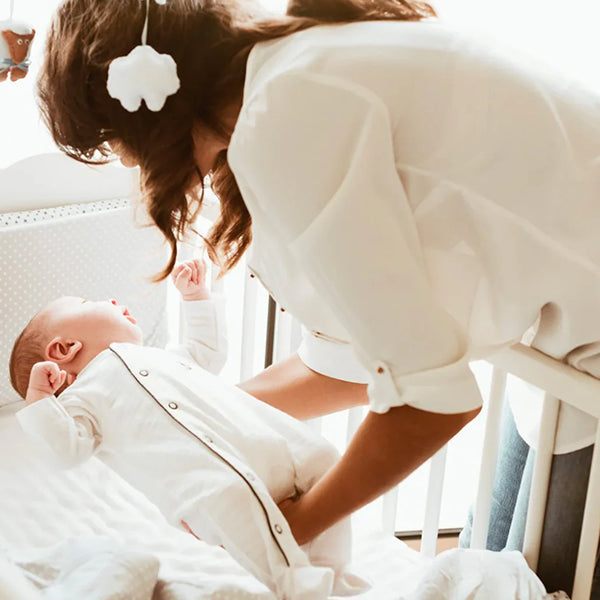Organic, natural, and transparent care
All our products are made in France or Europe with natural ingredients
More than 199,999 families trust us ❤️
Language: US
Products
Content
0 results
Organic, natural, and transparent care
All our products are made in France or Europe with natural ingredients
More than 199,999 families trust us ❤️
Language: US
Products
Content
0 results

Until around 4 months, a baby typically sleeps in short periods and wakes up frequently at night, but you can still start implementing a bedtime ritual to help them fall asleep. In fact, your baby may already show signs of tiredness through certain gestures or expressions...
"My 2-month-old baby doesn't sleep through the night, but when he's tired, I can tell that he has trouble falling asleep without tossing and turning. He gets frustrated, rubbing his face with his hands. I haven't found a bedtime ritual yet, but I think it might be time to start getting him used to it. At least to help him understand it's bedtime and not a nap in the living room... I’ve been doing this since he was born, as I only put him in his room when I go to bed myself.”
Giulia
Learning How to Put Baby to Sleep: Take Your Time
As a newborn, your baby will likely have interrupted nights at first, especially during the first few weeks or months. But nothing prevents you from starting to create the beginnings of a bedtime ritual. It will pay off later.
However, before establishing this bedtime routine that is unique to you and your baby, you must first spot the signs of tiredness:
At the first sign, be receptive and ready to guide them to sleep. At first, everything may seem chaotic with your baby, but little by little, you'll notice that they start wanting to sleep at more or less the same time. To track these windows, create a schedule or a sleep journal.
This way, you’ll be able to remember the sleep patterns that are beginning to form, helping you anticipate their bedtime and prevent missing the sleep window or skipping a cycle.
Anticipating the Bedtime Ritual
Have you identified the times when your baby is ready to sleep? Great! Just before they start showing signs of tiredness, anticipate by offering them their nap in the same conditions, whether it's in their crib, bassinet, or playpen if that’s where they feel safe to sleep. Always settle them in the same place for naps, and do the same for bedtime. They’ll gradually understand that it’s where they sleep.
And what’s the goal of this ritual you’re building? It’s to fill your baby’s emotional tank, helping them feel safe. This time spent together will help, but be aware: no ritual is the same for every parent. Everyone has their own way of helping their baby fall asleep. Just because your cousin’s baby falls asleep with a song doesn’t mean your baby will appreciate the same routine. Perhaps you’ve gotten them used to falling asleep with sweet words, by rocking them, or another soothing method.
Another thing to know: Don’t spend half an hour doing it. If your bedtime ritual lasts more than 20 minutes and your baby is still not asleep, it’s probably because they’re not ready, the cycle has passed, or it’s simply not the right time.
No Pressure
If you feel like it’s not yet time to create a ritual or set a rhythm for your baby, don’t pressure yourself. What matters most is that you trust yourself and ensure that your baby feels safe. If you feel ready to establish a regular rhythm for your newborn, go ahead.
They’ll sense that you’re prepared. But if they sense that you're not fully ready, it may hinder your efforts. We know how much babies absorb everything and are like emotional sponges.